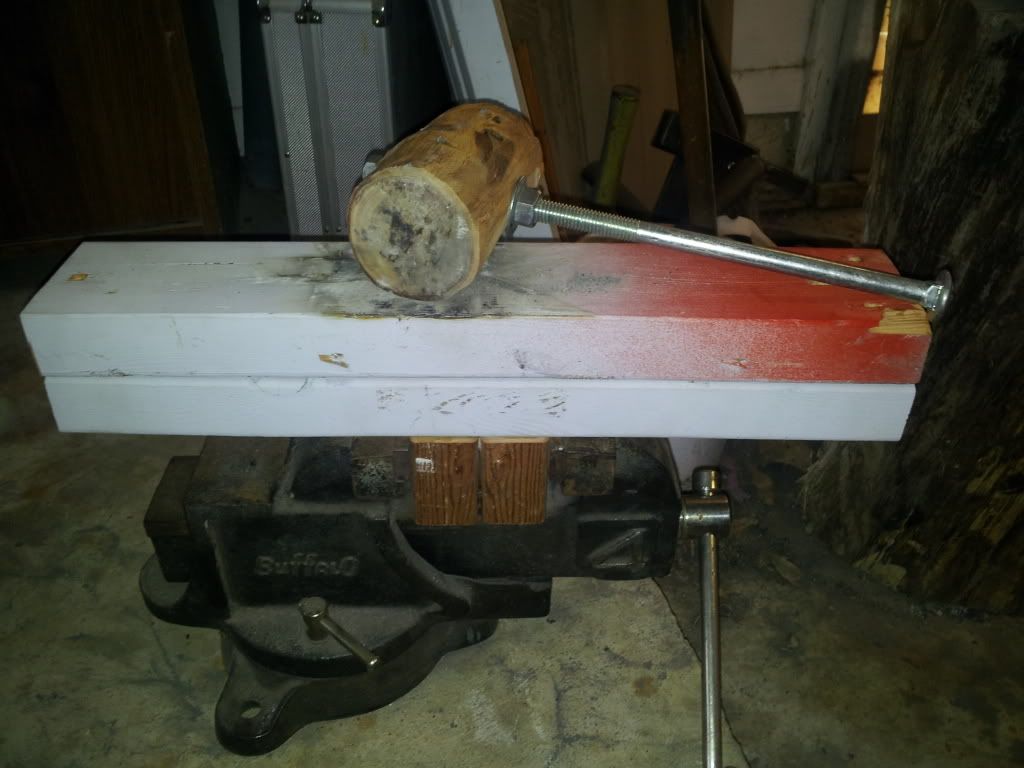Jason Wilder
Well-Known Member
Last night I was forging and noticed a bit of twist in my blade. Deciding to learn from experience and not duplicate my mistakes I made a quick and ugly wooden anvil/mallet from scraps I had on hand.

The mallet is from a pecan limb I had lying around. I know it is not the prettiest tool in the shop and is subject to spinning on the bolt, but it works for my needs, for now. The anvil is just a 2x4 I had in the shed for random projects.
Here is what gave me the idea
I am still not sure about the "1/4" wide slot in the board , about 6" deep. This slot will be used to take care of any twisting and simple bends". I guess I need to see it to understand what Stacy is talking about.
Let's see your wooden anvils!

The mallet is from a pecan limb I had lying around. I know it is not the prettiest tool in the shop and is subject to spinning on the bolt, but it works for my needs, for now. The anvil is just a 2x4 I had in the shed for random projects.
Here is what gave me the idea
Here is a handy "Wooden Anvil" to make. Oak or maple is great, pine will work:
Cut two 16" long piece of 2X6 or 2X8, and screw/glue them together from one side only...leaving one face just wood ( or use a 4X6). Screw a piece of 4X4 to the bottom. The 4X4 will get clamped in the vise ( which I know you have near the forge).
In one end of the top, saw a 1/4" wide slot in the board , about 6" deep. This slot will be used to take care of any twisting and simple bends.
With this "wooden anvil" and a wooden mallet strategically placed near the quench tank, there isn't much of a warp or twist that can't be dealt with quickly and easily.
This can be made as a dedicated post anvil with the use of a 30" tall piece of oak or maple tree trunk or a section of 12X6 ( or larger) beam. A wooden post anvil is good to hammer the curve out of hot blades when forging, as it won't flatten the edge as badly as steel does. The top will get nice and black and have plenty of "character" marks.
I am still not sure about the "1/4" wide slot in the board , about 6" deep. This slot will be used to take care of any twisting and simple bends". I guess I need to see it to understand what Stacy is talking about.
Let's see your wooden anvils!
